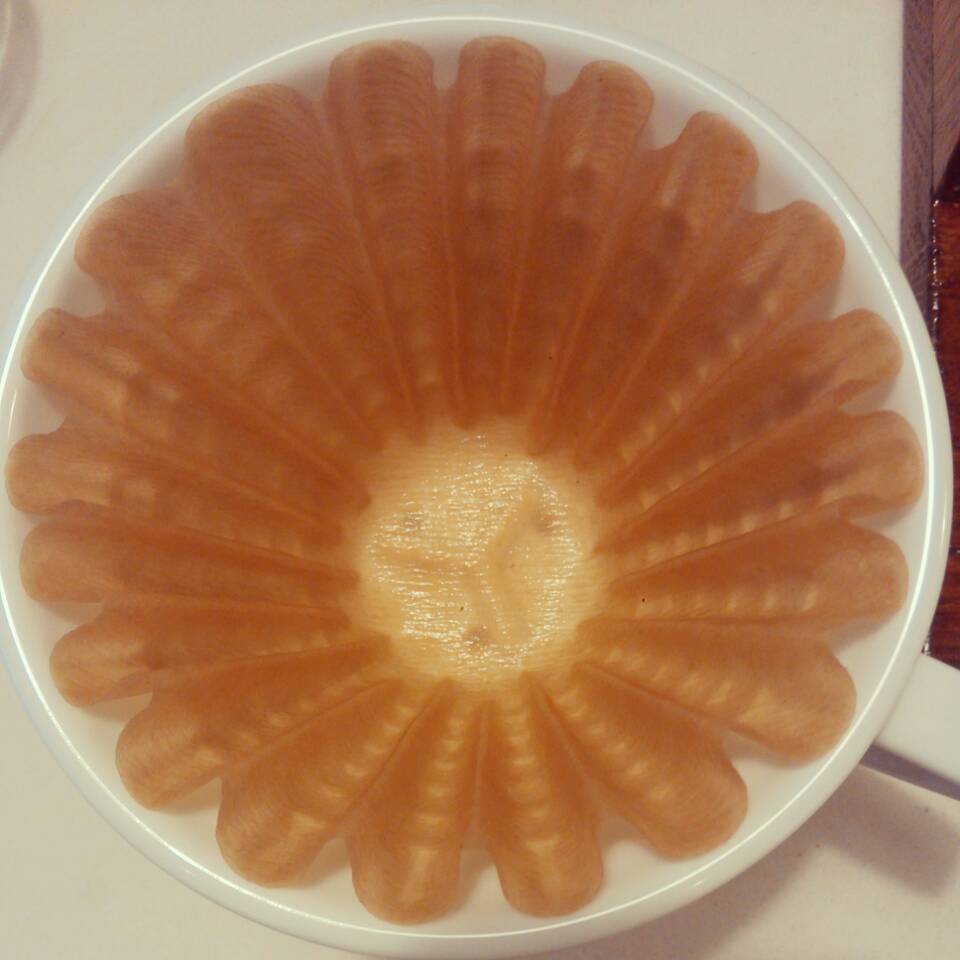Identification of the quality of coffee beans: a detailed introduction of coffee cup testing terms

When testing a cup of coffee, we should distinguish whether the flavor, alcohol thickness, acidity and wet aroma of the coffee are pleasant. Most cup tasters use the following criteria to judge coffee. While tasting the coffee, you should try to discern whether the flavor, body, acidity and aroma of the coffee is pleasant, or unpleasant. Here are the criteria that most tasters use to judge coffee.
Acidity Acidity: acidity is an essential feature of coffee, which is the feeling of dryness that coffee produces on the sublingual edge and the back palate. The effect of coffee acidity is similar to that of red wine, with a strong and exciting texture. Without enough acidity, the coffee tends to be flat. Acidity is different from sour taste, which is an unpleasant and bad taste feature. Acidity is a desirable characteristic in coffee. It is the sensation of dryness that the coffee produces under the edges of your tongue and on the back of your palate. The role acidity plays in coffee is not unlike its role as related to the flavor of wine. It provides a sharp, bright, vibrant quality. With out sufficient acidity, the coffee will tend to taste flat. Acidity should not be confused with sour, which is an unpleasant, negative flavor characteristic.
The wet aroma is difficult to separate from the flavor. If there is no sense of smell, our basic sense of taste is only sweet, sour, salty and bitter. The wet aroma enriches the taste discrimination of the soft palate. Some subtle and delicate differences, such as the "floral" or "wine" characteristics, come from the wet aroma of brewed coffee.
Alcohol thickness is the feeling of coffee in the mouth, that is, the feeling of stickiness, thickness and richness produced by coffee acting on the tongue. The difference between drinking whole milk and drinking water is a good example. Our perception of the alcohol thickness of coffee is related to the oil and solids extracted by coffee. The alcohol thickness of Indonesian coffee is significantly higher than that of South and Central American coffee. If you are not sure about the alcohol thickness difference of several types of coffee, try adding the same amount of milk to the coffee. Coffee with high alcohol thickness will retain more flavor when diluted with milk.
Flavor is the overall feeling of coffee in the mouth. Acidity, wet aroma and alcohol thickness are all components of flavor, and it is their balance and homogenization that produce our overall sense of flavor. Here are some typical flavor features: Flavor is the overall perception of the coffee in your mouth. Acidity, aroma, and body are all components of flavor. It is the balance and homogenization of these senses that create your overall perception of flavor. The following are typical flavor characteristics: general flavor characteristics General flavor characteristics:
Rich-refers to the thickness and richness of alcohol; complexity-the feeling of multiple flavors; balance-all basic taste features are satisfactory, and no one taste masks the other.
Fresh, bright, dry, light or lively-(common in Central American coffee): caramel-like sugar or syrup; chocolate-similar to unsweetened chocolate or vanilla aftertaste; delicious-delicate flavor felt on the tip of the tongue (washed New Guinea Arabica beans); earthy-earthy aroma (typical Sumatran coffee) Fragrant-a fragrant trait, ranging from floral to spicy; fruity-an aromatic trait reminiscent of berries or oranges; sweet and mellow-round, smooth, lack of acidity; nutty-similar to the aftertaste of fried nuts; spicy-reminiscent of the flavor and aroma of various spices; sweet-unastringent Wild-a wild flavor that is generally not considered pleasant; common in Ethiopian coffee; alcoholic flavor-an aftertaste reminiscent of fully ripe wine (common in Kenyan and Yemeni coffee).
Typical specific desirable flavor characteristics: Bright, Dry, Sharp, or Snappy- (typical of Central American coffees); Caramelly-candy like or syrupy; Chocolaty- an aftertaste similar to unsweetened chocolate or vanilla; Delicate- a subtle flavor perceived on the tip of the tongue (typical of washed New Guinea arabica); Earthy- a soily characteristic (typical of Sumatran coffees); Fragrant- an aromatic characteristic ranging f rom floral to spicy; Fruity- an aromatic characteristic reminiscent of berries or citrus; Mellow- a round, smooth taste, typically lacking acid; Nutty- an aftertaste similar to roasted nuts; Spicy- a flavor and aroma reminiscent of spices Sweet- free of harshness; Wildness- a gamey flavor which is not usually considered favorable but is typical of Ethiopian coffees; Winy- an aftertaste reminiscent of well-matured wine (typical of Kenyan and Yemeni coffees). Undesirable flavor characteristics: bitter-taste from the root of the tongue, mostly caused by overbaking; dull, non-irritating-neutral; charcoal-with charred carbon; inanimate-with "Flat"; miscellaneous-moldy, reminiscent of the taste of eating earth; earthy-with "miscellaneous"; insipid-sour, lack of dampness and aftertaste Grassy-reminiscent of freshly cut grass; rough-a caustic, scratched, rough quality; muddy-sticky but not strong; stiff-starch similar to texture, similar to boiled pasta water; rough-the feeling on the tongue, similar to eating salt Rubber smell-similar to burnt rubber smell (commonly found in dry processed Robusta beans); soft-same as "boring, non-irritating"; sour-similar to the acidity of unripe fruit; thin-acidity-free, usually caused by inadequate extraction; turpentine-tasting like turpentine; water-lacking alcohol thickness and no stickiness in the mouth Rough-wild quality. Typical specific undesirable flavor characteristics:Bitter- perceived on the back of the tongue, usually a result of over roasting;Bland- neutral in flavor;Carbony- burnt charcoaly overtones;Dead- see "flat"; Dirty- a mustiness reminiscent of eating dirt; Earthy- see "dirty"; Flat- lack of acidity, aroma, and aftertaste; Grassy- an aroma and flavor reminiscent of freshly cut lawn; Harsh- a caustic, clawing, raspy characteristic;Muddy- thick and dull;Rioy- a starchy texture similar to water which pasta has been cooked in;Rough- a sensation on the tongue reminiscent of eating salt Rubbery- an aroma and flavor reminiscent of burnt rubber (typically found only in dry-processed robustas); Soft- see "bland"; Sour- tart flavors reminiscent of unripe fruit; Thin- lacking acidity, typically a result of under brewing;Turpeny- turpentine-like in flavor;Watery- a lack of body or viscosity in the mouth;Wild- gamey characteristics.
For details, see: http://blog.sina.com.cn/u/2823091351
Source: private Coffee blog
Important Notice :
前街咖啡 FrontStreet Coffee has moved to new addredd:
FrontStreet Coffee Address: 315,Donghua East Road,GuangZhou
Tel:020 38364473
- Prev

Espresso: a detailed introduction to Italian Lungo Coffee to learn about the world of Italian coffee
Reference: Wikipedia Photo Source: YoungDoo Moon Flickr Lungo is Italian, the corresponding English is long, French is caf allong, Chinese means long, the author transliterated as enough coffee, refers to the use of twice the normal amount of water, through the Espresso coffee machine, to make a coffee drink, a Lungo, the effect is an elongated coffee drink
- Next

Coffee brewing utensils: hand-brewed coffee filter paper contrast detail map to understand the texture of filter paper
The quality of filter paper on the market is uneven, the lines of good filter paper are clear and delicate, and there is almost no pulp flavor. After wetting, the air channel is still strong, and the process of making coffee will not cause unsmooth water flow. While the lines of inferior filter paper are disorderly, the pulp taste is too heavy, and after wetting, the air channel dissipates seriously, the filter paper is completely attached to the filter cup wall, and it is not easy to make coffee water flow.
Related
- What is the meaning of lactic acid fermentation with coffee bean treatment?
- How to judge the state of foam by sound?
- How does the latte pull out the unicorn pattern? Come to get for a little trick to improve the flower pull!
- Will flower pulling affect the taste of the latte?
- Do you know the history of coffee?
- The difference between honey treatment and sun washing what is raisin honey treatment?
- What kind of milk can a novice use to make coffee foam to keep the foam longer? The correct method and skills of milking tutorial sharing
- Why do washed coffee beans taste sour? Flavor characteristics of washed Coffee
- Introduction to the skill of how to practice the size and height of water injection around the circle of hand-brewed coffee
- How do beginners practice coffee flower drawing from scratch?

